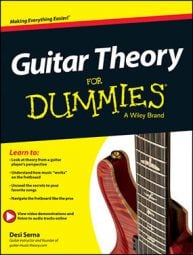On the guitar, intervals are classified by one of five qualities. The five interval qualities in music are:
Perfect (P): The perfect intervals are 5ths, 4ths, and 8ths (better known as unisons or octaves).
Major (M): The major intervals are 3rds, 6ths, and 7ths.
Minor (m): The minor intervals are flat 3rds, flat 6ths, and flat 7ths.
Augmented (A): When you increase a perfect or major interval by one half step, you get an augmented interval, which is also called a sharp interval. For example, G to C is a 4th, while G to Cs is a sharp or augmented 4th (A4 or s4).
Diminished (”): When you decrease a perfect or minor interval by one half step, you get a diminished interval, which is also called a flat interval. For example, G to D is a 5th, while G to Df is a flat or diminished 5th (f5 or ”5). G to Bf is a minor 3rd, while G to BF is a double flat or diminished third (F3 or ”3).
Decreasing an interval that’s already flat, like a minor 3rd, creates a double flat or diminished interval. What’s confusing here is that, from a player’s perspective, decreasing a minor interval simply puts you on another interval — namely, a 2nd . You may also be wondering whether decreasing a major interval is also considered diminishing. Nope! Decreasing a major interval creates a minor interval.

